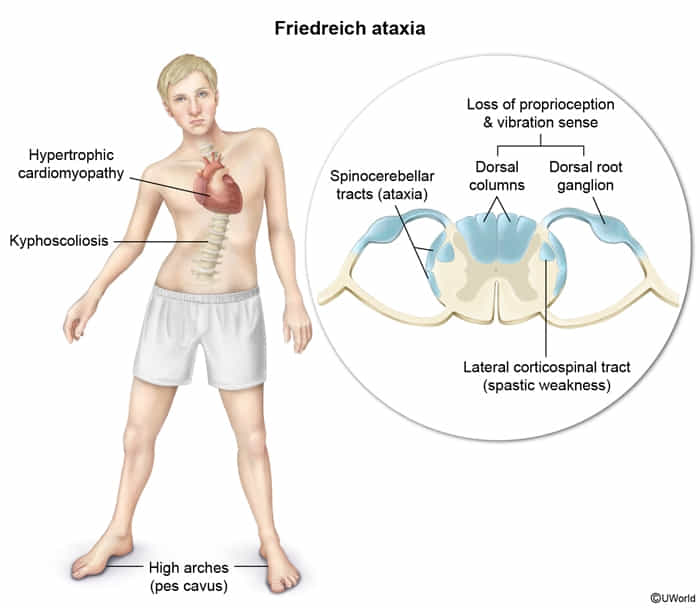Epidemiology
- The most common autosomal recessive ataxia
- Peak incidence: 8–15 years (most cases < 25 years)
Etiology
- Autosomal recessive disorder caused by GAA trinucleotide repeat expansion in the FXN gene (chromosome 9)
- Leads to ↓ frataxin (an iron-binding protein) → impaired mitochondrial iron metabolism
- Results in degeneration of dorsal columns, spinocerebellar tracts, corticospinal tracts, and peripheral nerves
- Cardiomyocyte damage → hypertrophic cardiomyopathy

Clinical features
Mnemonic
Friedreich is fratastic (frataxin): he’s your favorite frat brother, always staggering and falling but has a sweet, big heart. Ataxic GAAit.
- Onset: Childhood/adolescence (before age 25)
- Progressive ataxia (gait and limb)
- Both sensory and cerebellar features
- Loss of proprioception and vibration sense (dorsal column dysfunction)
- Spastic paralysis due to degeneration of the lateral corticospinal tract
- Muscle weakness, dysarthria, dysphagia
- Absent deep tendon reflexes (peripheral neuropathy)
- Pes cavus (high-arched feet) and kyphoscoliosis
- Due to decreased muscle tone and muscle atrophy, which leave the spinal column unsupported.
- Hypertrophic cardiomyopathy (most common cause of death)
- Diabetes mellitus (pancreatic β-cell dysfunction)
Diagnostics
Mimics Vitamin E deficiency